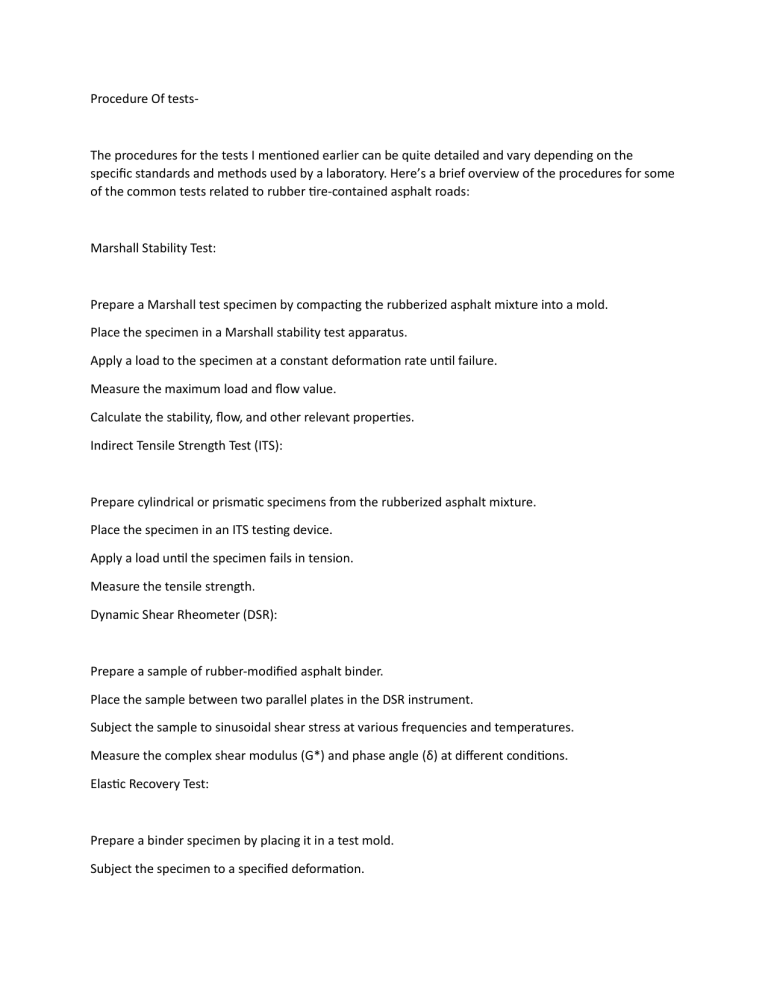Asphalt Road Testing Procedures: Rubber Tire-Contained Asphalt
advertisement

Procedure Of tests- The procedures for the tests I mentioned earlier can be quite detailed and vary depending on the specific standards and methods used by a laboratory. Here’s a brief overview of the procedures for some of the common tests related to rubber tire-contained asphalt roads: Marshall Stability Test: Prepare a Marshall test specimen by compacting the rubberized asphalt mixture into a mold. Place the specimen in a Marshall stability test apparatus. Apply a load to the specimen at a constant deformation rate until failure. Measure the maximum load and flow value. Calculate the stability, flow, and other relevant properties. Indirect Tensile Strength Test (ITS): Prepare cylindrical or prismatic specimens from the rubberized asphalt mixture. Place the specimen in an ITS testing device. Apply a load until the specimen fails in tension. Measure the tensile strength. Dynamic Shear Rheometer (DSR): Prepare a sample of rubber-modified asphalt binder. Place the sample between two parallel plates in the DSR instrument. Subject the sample to sinusoidal shear stress at various frequencies and temperatures. Measure the complex shear modulus (G*) and phase angle (δ) at different conditions. Elastic Recovery Test: Prepare a binder specimen by placing it in a test mold. Subject the specimen to a specified deformation. Measure the specimen’s ability to recover its original shape upon release of the load. Penetration and Softening Point Tests: Penetration test measures the depth to which a standard needle penetrates the asphalt binder at a specific temperature. Softening point test determines the temperature at which the asphalt binder becomes soft and deforms under a specific load. Aging and Durability Tests: These tests simulate aging conditions, which can include exposure to high temperatures, oxygen, and pressure. The specific procedures vary based on the test being conducted, such as Rolling Thin Film Oven Test (RTFOT) or Pressure Aging Vessel (PAV) tests. Binder Rheology Testing: The procedures for tests like Multiple Stress Creep Recovery (MSCR) involve subjecting asphalt binders to various stress and temperature conditions and measuring their responses. Rubber Particle Characterization: Characterize the rubber particles in the asphalt mixture using techniques like microscopy, image analysis, and particle size distribution measurement. Environmental Testing: These tests may involve leaching studies to evaluate the environmental impact of rubber-modified asphalt mixtures. It’s essential to follow specific test standards and procedures as outlined by relevant organizations such as ASTM, AASHTO, or local regulatory agencies. Detailed test protocols can be found in these standards, and they provide step-by-step instructions for each test, including sample preparation, equipment setup, and data analysis.
